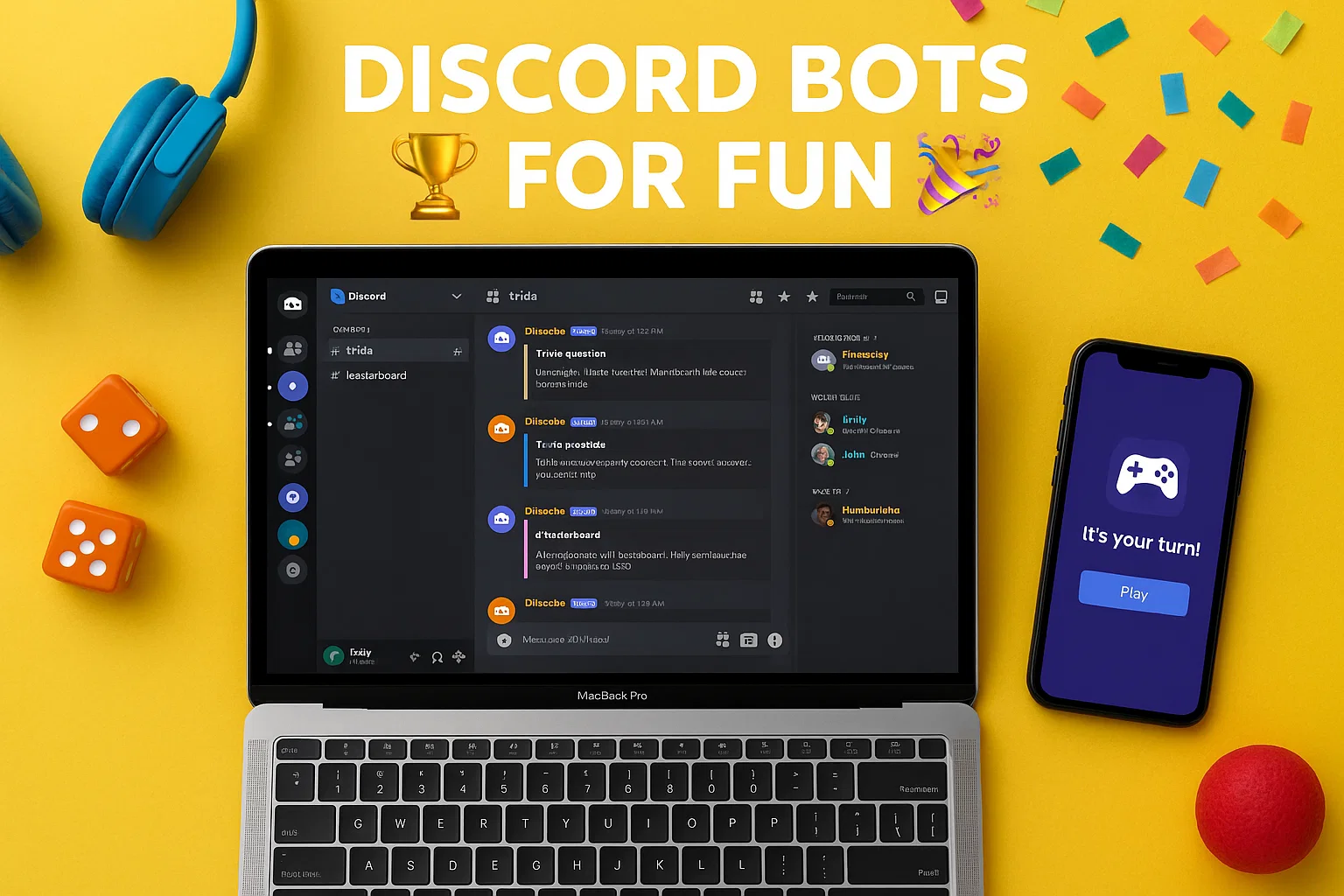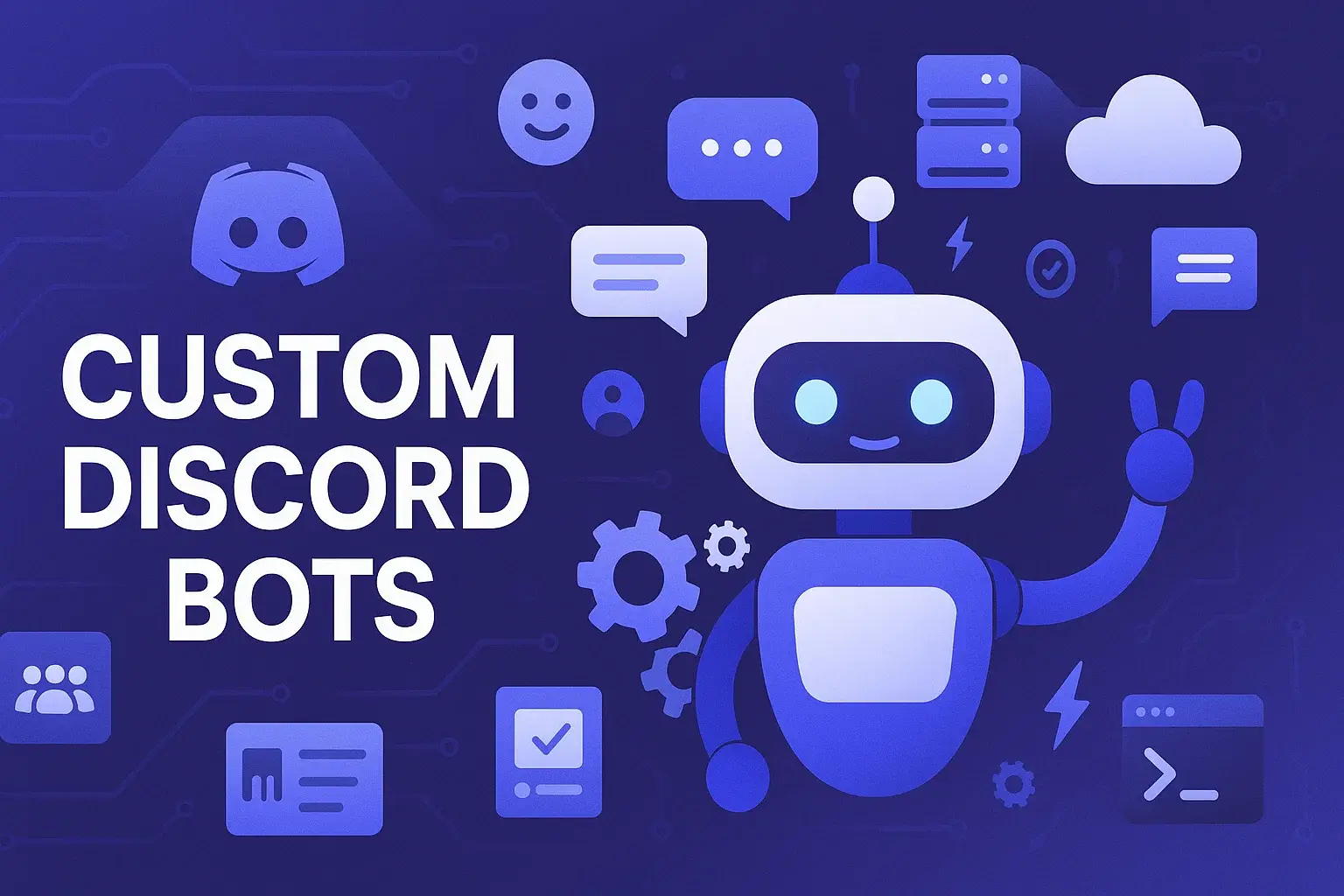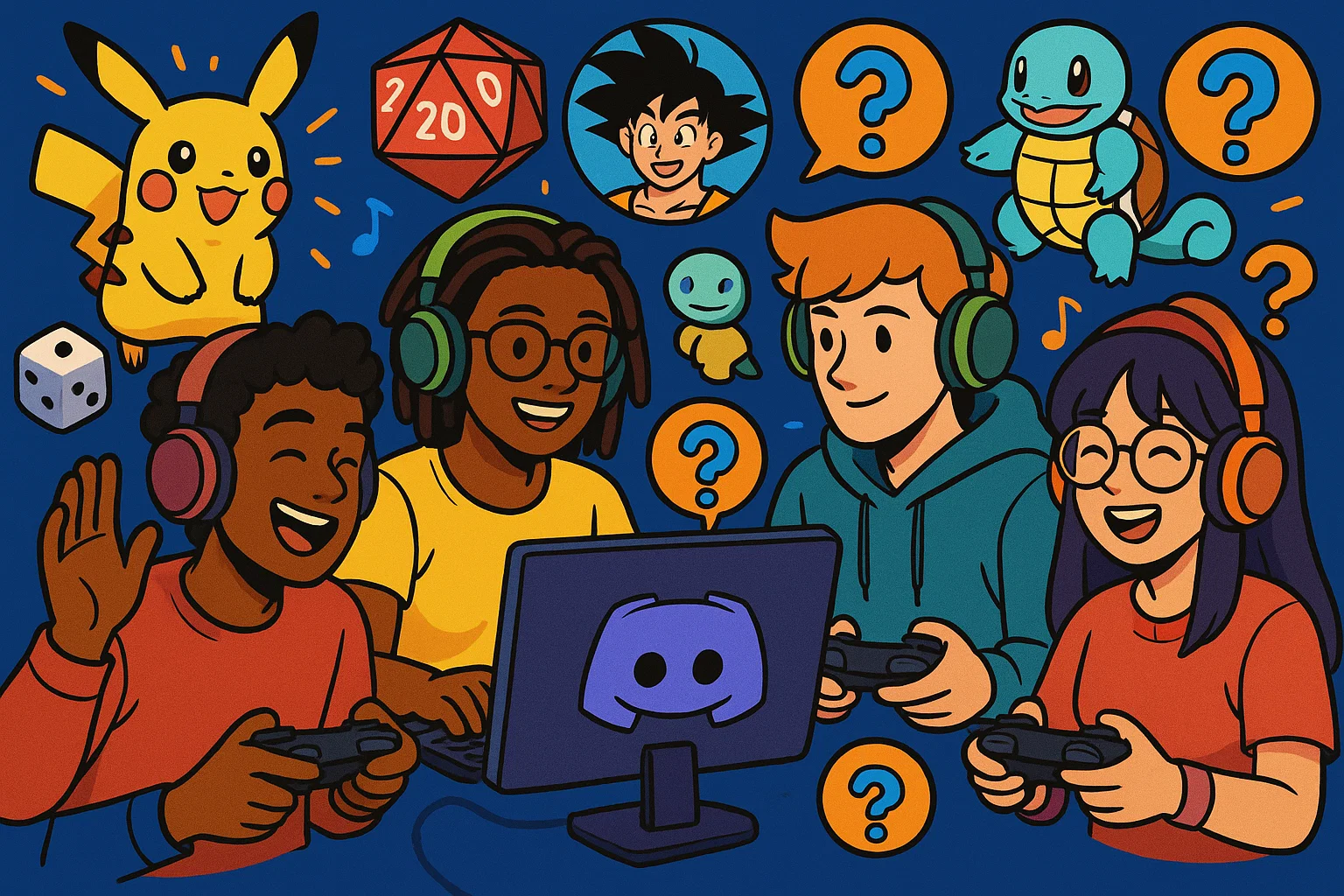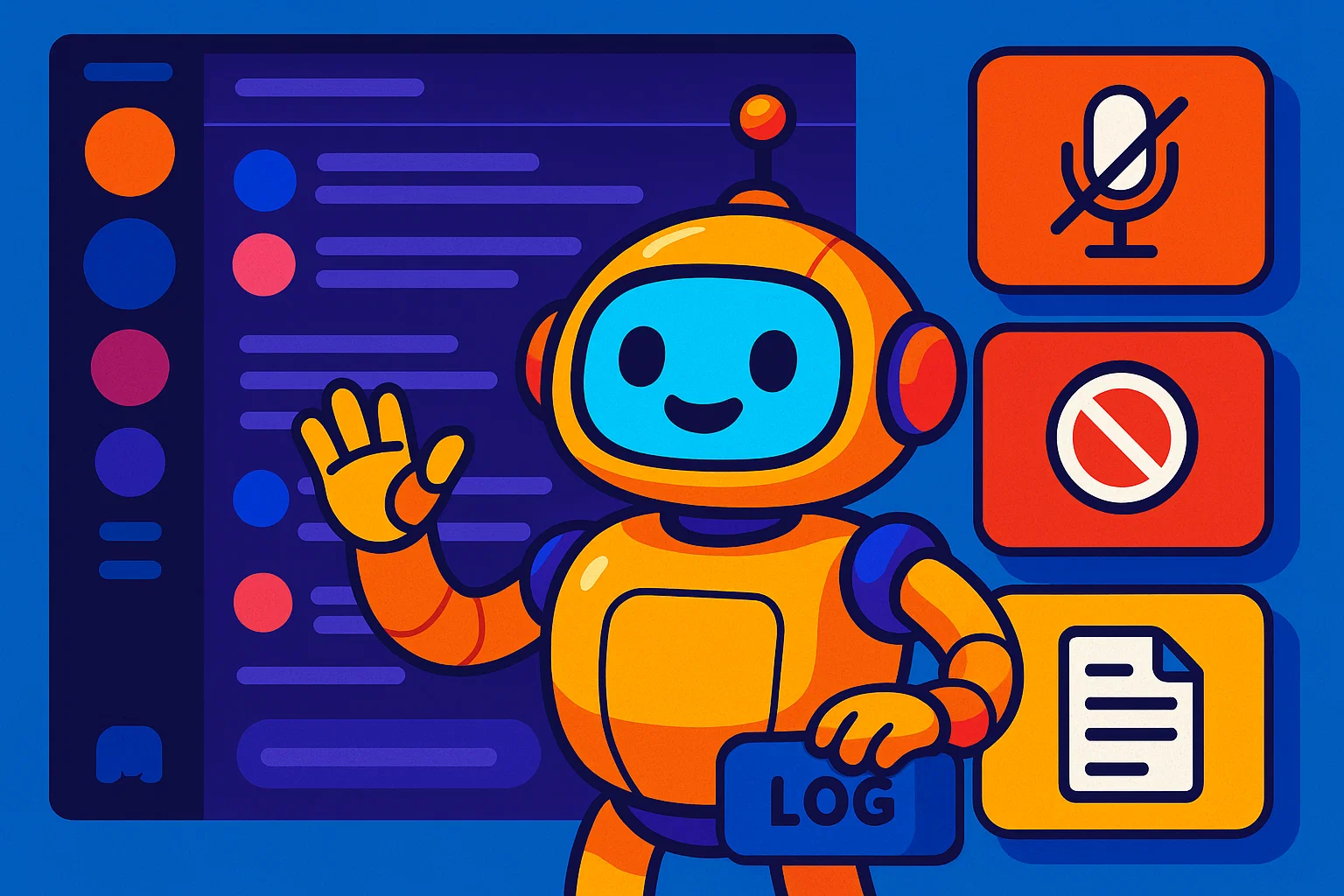You want your Discord server to buzz. Not just with activity, but with laughs, micro-competitions, and those little “wow” moments that make people stick around. Enter Discord bots for fun — the tiny automations that turn passive chat into a lively playground. They run trivia, dish out memes, hold tournaments, manage virtual economies, and even host improv-style games. Best part: most are easy to add and even easier to love.
This post is a practical, friendly guide to the best fun bots, creative ways to use them, and the small design choices that keep engagement high without turning your server into chaos. I’ll cover bot types, recommended setups, moderation tips, monetization-safe ideas, and a bunch of copy-ready commands you can paste into your admin docs. Let’s get your server feeling alive.
“A good fun bot is the bartender of your server — knows everyone’s name and keeps the jokes flowing.”
— server managers who’ve seen it work
Why use Discord bots for fun?
Bots scale social glue. A single well-timed mini-game or a leaderboard nudge can create hours of conversation and daily return visits.
- They automate low-effort interactions (think: 30-second trivia rounds).
- They reward activity with XP, roles, or tiny virtual prizes.
- They create anchor events — weekly tournaments, daily quests, or meme-of-the-day.
- They reduce moderator workload by running games and awarding prizes automatically.
You don’t need dozens of bots. Two or three, chosen for your server’s vibe, are usually enough.
Main types of fun bots you should know about
Trivia & quiz bots
Trivia drives quick bursts of engagement. Host scheduled trivia nights, pop short questions in a channel, or let members challenge each other.
- Features to look for: question categories, leaderboards, timed rounds, and easy moderation.
- Use case: daily 7 PM trivia with small role rewards for top scorers.
Meme & entertainment bots
These bots fetch memes, GIFs, or generate images (image macros, text-to-meme). They’re the lighter side of community fuel.
- Features: reaction-based triggers, meme generators, and content filters so mods don’t have to babysit.
- Use case: #memes channel auto-posts at peak hours + user-submitted memes.
Mini-game & roleplay bots
Text RPGs, card battles, and idle economy games give users a reason to check the server multiple times per day.
- Features: persistent state, daily quests, item shops, and PvP duels.
- Use case: weekend guild quests that require small teams or raids.
Music & chill bots
Even though music bots have had ups and downs, they still create ambiance. Use them for “watch parties” or background vibes in voice channels.
- Features: stable streaming, playlists, and volume control.
- Use case: late-night music room for casual hangouts.
Economy & tipping bots
Virtual coins, tipping, and server shops let users exchange value for role cosmetics or entry into events.
- Features: tipping commands, leaderboards, shops, and transaction logs.
- Use case: monthly raffle tickets bought with server currency.
Tournament & bracket bots
For competitive communities, bots that create brackets, schedule rounds, and auto-advance winners are golden.
- Features: bracket generation, match scheduling, reminders, and dispute flags.
- Use case: seasonal tournaments with small prizes or server recognition.
“Bots don’t replace community — they give the community reasons to talk to each other.”
— community builders who prioritize connection over feature hoarding
Picking the right fun bots (the pragmatic checklist)
Ask these before you invite a bot:
- Is it actively maintained? Abandoned bots break when Discord updates.
- Does it request only needed permissions? Prefer least-privilege.
- Is there an admin dashboard or clear commands for moderators? You’ll thank yourself later.
- Can it export data (leaderboards, transaction logs) in case you migrate?
- Does it have moderation filters or safe-mode for NSFW content? Essential for public servers.
- Is the license and monetization policy clear (if you plan to run paid events)?
If a bot fails three of these checks, don’t add it. It’s honestly not worth the headache.
Design your fun stack — suggestions by server vibe
Casual hangout (50–200 members)
- 1 trivia bot for hourly questions.
- 1 meme/entertainment bot.
- 1 leveling bot that rewards participation with cosmetic roles.
Competitive gaming community (200–2,000 members)
- Matchmaking + tournament bot.
- Stats/leaderboard bot tied to game outcomes.
- Economy bot for entry fees and prize pools (transparent escrow only).
Creative/artist community
- Prompt generator or writing mini-game bot.
- Music bot for collab listening sessions.
- Reaction-role bot for creative challenges (submit → vote → winners).
Mix and match. Don’t overload channels with multiple bots posting at once.
How to set up events that actually work
1. Start small, then iterate
Run a single weekly event (trivia or mini-tournament) for a month before adding anything else. Measure active participants and retention.
2. Use pinned rules + a simple sign-up flow
Pin event rules and prize details. Let participants register with a command like /join-trivia so the bot can schedule reminders.
3. Keep rounds short
No one wants a 45-minute trivia marathon. Aim for 5–10 minute rounds for rapid turnover.
4. Publicize winners
Automate posting winners to a #hall-of-fame or give a temporary role so others see the recognition.
5. Provide fallback manual controls
Give moderators commands to pause, rerun, or refund event entries in case of bot hiccups.
Sample commands you can use (copy/paste into admin doc)
/trivia start category:general rounds:5— kicks off a short trivia session./meme fetch top— posts a curated meme./duel @user— initiates a friendly PvP card duel./shop buy 1 role_color— purchases a cosmetic role from the server store./tournament create name:SpringCup teamsize:5— starts bracket generation.
Tailor the command names to your bots; most popular bots let you change prefixes or slashes.
“A small prize and public recognition beats a big prize with no announcement.”
— event organizers who learned the hard way
Moderation & safety: fun, but not reckless
Fun bots can be abused. Here’s how to keep things safe:
- Use account-age checks for tournament entry to block sock puppets.
- Rate-limit tipping and economy actions to stop spam and farm abuse.
- Keep logs: every currency transaction and tournament outcome should be auditable.
- Quarantine user-generated content for review if your server is public.
- Use moderation bots that can pause or mute other bots when things go sideways.
Small guardrails preserve trust — and trust keeps people paying attention.
Monetization ideas (ethical, community-first)
You don’t need to charge for everything. Here are community-friendly options:
- Paid tournaments: small entry fee goes to prize pool + hosting fee for the server. Be transparent.
- Premium cosmetic roles: sell a monthly cosmetic role that shows in leaderboards.
- Sponsored events: partner with brands for themed tournaments or giveaways.
- Patreon + perks: patrons get priority registration or premium mini-games.
If money is involved, publish rules, fees, refund policy, and payout schedule. Transparency avoids drama.
Hosting & reliability tips
- Self-host mission-critical bots when possible, or use reputable hosted bots with good uptime records.
- Use Redis for ephemeral queues (matchmaking) and Postgres for persistent stats.
- Monitor key metrics: daily active users, event participants, error rates.
- Use process supervisors (systemd, PM2, Docker) for automatic restarts.
- Back up leaderboards and virtual economy snapshots weekly.
If a hosted third-party bot is essential, verify support SLA and how they handle outages.
Fun bot ideas you might not have tried
Micro-story flash events
Drop a serialized micro-story across channels and let users vote on the next plot twist. Winner gets a tiny prize.
Meme mashup generator
Combine two user-submitted images into a new meme automatically — creative chaos and lots of laughs.
Live collaborative puzzles
Use a bot to reveal puzzle clues every hour; the first team to solve gets bonus XP.
Voice-activated games
Tasks in voice channels (like “find the hiding sound” or improv rounds) moderated by bots that track participation.
These unique formats move your server from “another gaming server” to memorable.
Troubleshooting common hiccups
Bots spam the channel: Check bot posting schedules and enable per-channel limits.
Leaderboards don’t match reality: Ensure atomic DB updates and consider transactions for score updates.
Tournament disputes: Keep replays or screenshots, use a dispute command (/dispute matchID) and require moderator review.
Users farm XP: Add a cooldown per channel and require meaningful contributions (not repeated short messages).
Document these in your moderator handbook — it saves way more time than you think.
Final checklist before you press “Invite Bot”
- Pick 2–3 bots and test in a private dev server.
- Confirm bot permissions and set a dedicated Bot role.
- Script onboarding messages and pinned rules.
- Plan your first month of events and schedule them.
- Add monitoring for errors and uptime.
- Prepare a moderator playbook for refunds, disputes, and pauses.
“Invite slowly. Replace quickly. And always keep one human in the loop.”
— closing advice from server admins who sleep better now



